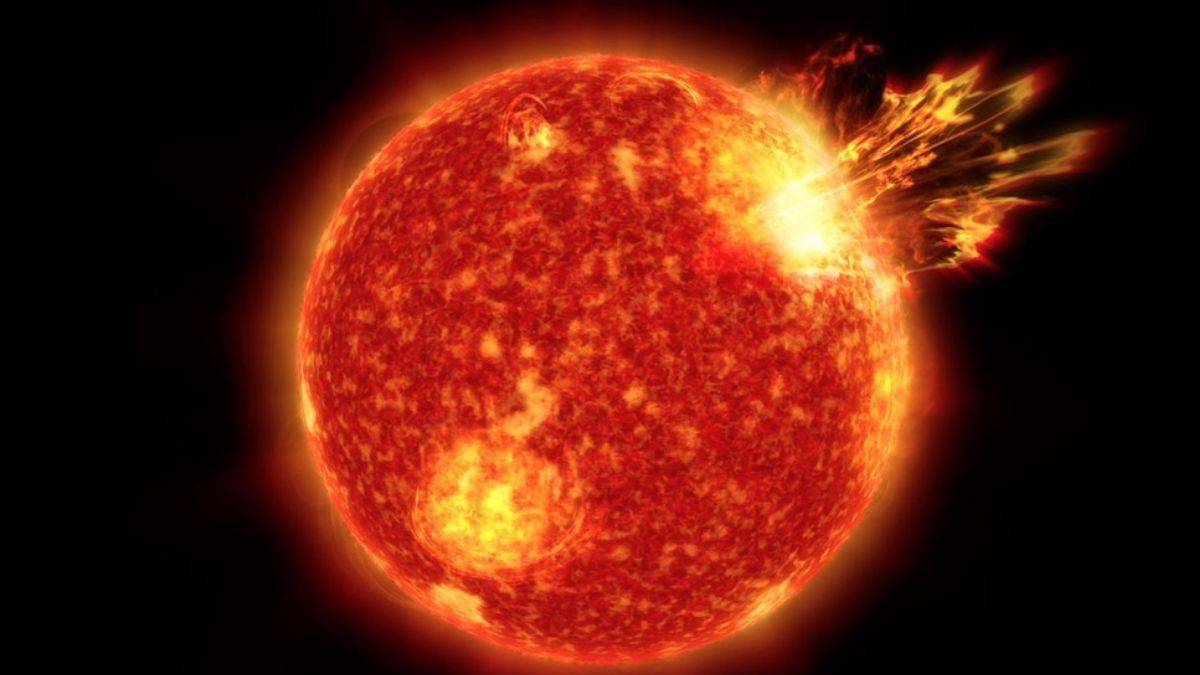Why sun is the hottest star near the planet earth?

The Sun is the central star of the Solar System. It is a nearly perfect ball of hot plasma that has been heated to incandescence by nuclear fusion processes in its core and radiates energy mostly as light, ultraviolet, and infrared radiation. It is the primary source of energy for all life on Earth. It is a 4.5 billion-year-old star at the heart of our solar system, a hot incandescent ball of hydrogen and helium. It is around 93 million miles (150 million kilometers) from Earth, and life as we know it would not be possible without its energy.
The sun is the star closest to Earth. Its gravitational attraction keeps the planet in orbit even at a distance of 150 million kilometers (93 million miles). It emits light and heat, or solar energy, which allows life to exist on Earth. It’s a yellow dwarf star that’s been around for roughly five billion years, according to astronomers. It brightens the Earth during the day and gives the Moon its shine at night. Without the Sun, there would be no life on Earth. It is located 8.5 light minutes from Earth.
The Earth orbits the Sun once every 365.3 days, whereas distant planets, such as Mars, orbit the Sun once every 687 days. In comparison, Mars is 1.5 AU from the Sun, which translates to 227.94 million kilometers / 141.70 million miles.
It’s difficult to forecast a spacecraft’s path to the Sun. If we launched an imaginary spacecraft from Earth at a constant speed of 153,454 miles/246,960 kilometers per hour, it would reach the Sun in 606 hours, or 25 days.
However, what complicates our calculation is the fact that it is impossible to launch a spaceship that would continually retain its top speed from the start. It will take several minutes or hours for the spacecraft to achieve top speed after launch.
The Parker Solar Probe is one of the fastest planned spacecraft on the planet. This probe may achieve a top speed of 430,000 miles per hour (692,017 kilometers per hour). This means that the spaceship may reach the Sun in 216 hours or nine days.
The Sun’s radiation provides nearly all of the energy to the Earth. The sun also has the greatest influence on the changing climate of various regions on Earth at various periods of the year. The Earth revolves around the sun on a fixed plane that is tilted 23.5° with regard to its vertical axis. One actual rotation, or one sidereal period, around the sun takes the Earth 23 hours and 56 minutes.
The solar day, on the other hand, is the amount of time it takes for a point on the earth pointing towards a specific point on the sun to complete one rotation and return to the same place. It is defined as the time it takes the sun to go from one day’s zenith to the following day’s zenith, or from noon today to noon tomorrow. The length of a solar day fluctuates and is consequently considered to be 24 hours on average. A solar day can vary by up to 15 minutes throughout the year. This time discrepancy is caused by three factors.
- the earth’s motion around the Sun is not perfect circle but is eccentric;
- the Sun’s apparent motion is not parallel to the celestial equator;
- the precession of the Earth’s axis.
The rotation of the earth on its axis also generates the phenomenon of day and night. The length of the day and night is determined by the time of year and the location’s latitude. The northern hemisphere has the shortest solar day around December 21 (winter solstice) and the longest solar day around June 21. (summer solstice). In theory, the length of the day should be equal to the length of the night at the equinox.
The average time it takes the earth to revolve around the sun in 365 days. The elliptical path is the path that the earth takes to revolve around the sun.


